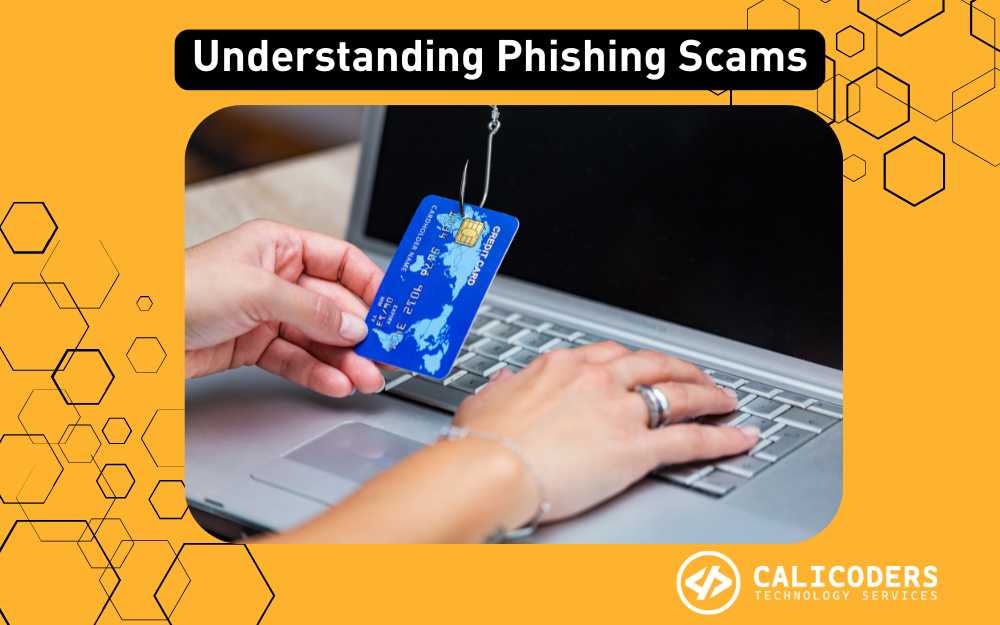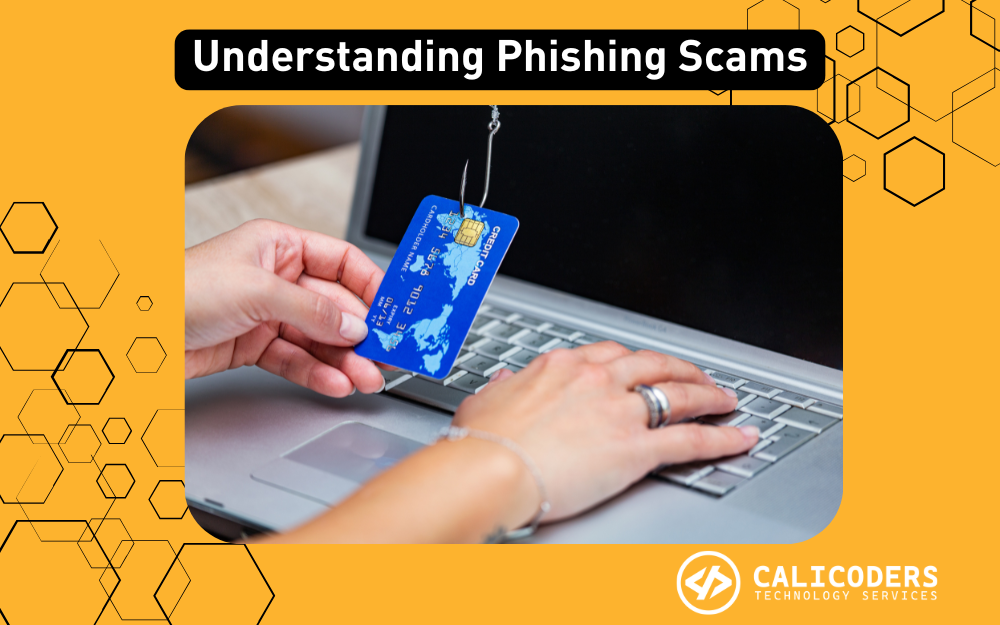
In today’s digital world, phishing scams are a major threat to both individuals and businesses. As technology evolves, so too do the tactics used by cybercriminals to steal sensitive information, money, and access to personal accounts. Phishing attacks can be sophisticated, appearing as legitimate emails, websites, or messages that trick you into divulging personal details like passwords, credit card numbers, and social security information.
In this blog post, we’ll dive into what phishing scams are, how to recognize them, and provide strategies for protecting yourself from falling victim to these malicious attempts.
What Is a Phishing Scam?
Phishing is a type of cyberattack where scammers impersonate legitimate entities or organizations to deceive individuals into revealing sensitive personal information. These attacks are often carried out via email, social media messages, phone calls, or fake websites that mimic trusted sources.
Phishing scams may look legitimate at first glance, but they almost always have certain red flags that can help you identify them. The goal of these scams is to trick you into clicking on a malicious link, downloading a harmful attachment, or entering your personal information into a fake website.
Common Types of Phishing Attacks
- Email Phishing:
This is the most common type of phishing attack, where scammers send fraudulent emails that appear to be from reputable sources like banks, tech companies, or even government agencies. These emails typically urge you to take immediate action, such as clicking on a link to “verify” your account or “update” your personal information. - Spear Phishing:
Unlike generic phishing attacks that target a wide audience, spear phishing is highly targeted. Cybercriminals do their research and customize the attack to a specific individual or organization. They may gather information from social media profiles, company websites, or other public sources to make their messages appear more credible. - Whaling:
Whaling is a form of spear phishing specifically targeting high-profile individuals, such as CEOs, CFOs, and other executives. These attacks are often more sophisticated and may involve posing as a trusted partner or client to steal sensitive business information. - Smishing (SMS Phishing):
Smishing uses text messages to lure victims into clicking on links or downloading malicious attachments. The message might look like it’s coming from a bank, courier service, or even a government agency asking you to confirm your personal information or claim a prize. - Vishing (Voice Phishing):
Vishing occurs when scammers use phone calls to impersonate legitimate organizations and ask for sensitive data. These scams may involve fake IRS agents, bank representatives, or tech support claiming they need your account details to assist with an issue. - Pharming:
Pharming involves redirecting users from legitimate websites to fake ones. This can happen when malware infects your device or when a hacker compromises a legitimate website’s DNS (Domain Name System) settings. The goal is to trick users into entering their login credentials or personal information on a fake site that looks exactly like the real one.
How to Recognize a Phishing Scam
Phishing scams often use urgency, fear, or curiosity to trick you into taking immediate action. While these scams may look convincing, there are several red flags you can watch out for:
1. Suspicious Sender Address
While phishing emails may appear to be from a trusted organization, they often come from email addresses that are slightly altered or misspelled. For example, an email that looks like it’s from your bank may come from something like “support@ban1k.com” instead of the official “support@bank.com.”
2. Generic Greetings
Phishing emails often use generic greetings like “Dear Customer” or “Dear User” instead of addressing you by name. Legitimate companies typically use your full name or the name you provided when creating your account.
3. Unsolicited Requests for Personal Information
Be suspicious of emails or messages that ask you to provide personal details such as your Social Security number, login credentials, or credit card information. Legitimate businesses will never ask for sensitive information via email or text.
4. Urgency or Threats
Phishing messages often create a sense of urgency, telling you that your account will be locked, or your money will be lost if you don’t act immediately. These scare tactics are meant to get you to act quickly without thinking critically.
5. Suspicious Links or Attachments
One of the most common tactics in phishing attacks is including a malicious link or attachment. Hover your mouse over any links in an email (without clicking) to check where they lead. If the URL looks suspicious, don’t click it. Similarly, avoid downloading attachments from unknown senders, as they could contain malware.
6. Poor Grammar and Spelling
Many phishing emails are written in a hurry or by non-native speakers, which means they often contain spelling and grammatical errors. Legitimate companies generally have professional communication standards.
How to Protect Yourself from Phishing Scams
While phishing scams are becoming more sophisticated, there are steps you can take to protect yourself and your organization:
1. Use Multi-Factor Authentication (MFA)
Enable multi-factor authentication (MFA) on your accounts whenever possible. MFA adds an extra layer of security by requiring more than just a password to access your account—usually a code sent to your phone or an app.
2. Be Cautious of Links and Attachments
Before clicking on a link or downloading an attachment, take a moment to verify its authenticity. Hover over links to see where they lead, and double-check the email address of the sender. If you’re ever unsure, it’s safer to visit the official website directly rather than clicking a link in an email.
3. Keep Software Updated
Keep your operating system, browsers, and security software up to date. Many phishing attacks exploit known vulnerabilities in outdated software. Regularly installing security updates can help protect you from these threats.
4. Verify Requests Directly
If you receive an email or phone call that seems suspicious, don’t respond directly. Instead, contact the organization or person directly through their official website or phone number to verify the request. Banks, government agencies, and other reputable organizations will never ask for sensitive information via email or text.
5. Educate Yourself and Others
Stay informed about the latest phishing trends and educate your family, friends, and colleagues about the risks of phishing. Regular training and awareness can help prevent individuals from falling for scams.
6. Use Anti-Phishing Tools
Consider using anti-phishing tools such as browser extensions or email filters that can automatically detect phishing attempts. Many security software packages offer phishing protection as part of their services.
7. Report Phishing Attempts
If you receive a phishing email or encounter a phishing website, report it to the relevant authorities. In the United States, you can report phishing attempts to the Federal Trade Commission (FTC) or forward suspicious emails to the Anti-Phishing Working Group (APWG).
Conclusion
Phishing scams are a serious and ongoing threat, but by staying vigilant and following best practices for online security, you can protect yourself and your organization from these malicious attacks. The key to defending against phishing is awareness—know the signs, be cautious of unsolicited requests, and always verify before sharing personal information.
Remember, if something feels off or too good to be true, trust your instincts and take the time to investigate further. With the right precautions in place, you can significantly reduce your chances of falling victim to phishing scams and keep your personal and financial data safe.
To get started, call our office at 909-654-6444 or click here to schedule a consultation.
